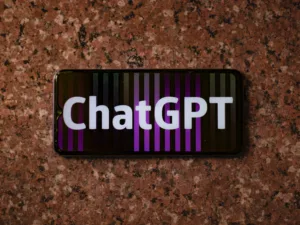
Exploring the Best Features of ChatGPT in the Modern Era
Posts by SumitNovember 8, 20230 Comments
Table of Contents
ToggleIntroduction
In a world where communication is key, the evolution of language models has played a pivotal role in shaping the landscape of human interaction. Among these groundbreaking advancements, ChatGPT stands out as a beacon of innovation, offering a range of features that redefine the possibilities of conversational AI. In this blog, we’ll be exploring the best features of ChatGPT in the Modern Era, exploring how it is revolutionizing communication in the modern era.

Natural Language Understanding:
ChatGPT boasts an unparalleled ability to comprehend and respond to natural language. Its sophisticated algorithms allow it to grasp context, understand nuances, and generate responses that closely mimic human conversation. This feature elevates the user experience, making interactions with ChatGPT feel remarkably authentic.

Context Retention:
One of the most remarkable aspects of exploring the best features of ChatGPT in the Modern Era is its ability to retain context throughout a conversation. This means that it can maintain awareness of the ongoing dialogue, recalling previous messages and responses. This feature ensures a seamless and coherent exchange, bridging the gap between short-term and long-term memory in a conversation.

Adaptability Across Domains:
ChatGPT shines not only in its ability to understand language but also in its adaptability across various domains and topics. Whether you’re discussing technology, science, literature, or everyday chit-chat, ChatGPT can navigate diverse subject matters with ease, making it a versatile tool for a wide range of applications.
Prompt Customization:
Users can now tailor their interactions with ChatGPT by providing specific prompts, guiding the conversation in a direction that suits their needs. This feature enhances user control, allowing for a more personalized and targeted exchange of information.

Continual Learning and Improvement:
ChatGPT is not static; it’s designed to learn and evolve. Through continuous training, it adapts to new information and updates, ensuring that it remains at the forefront of conversational AI capabilities. This commitment to improvement sets ChatGPT apart as a dynamic and future-ready language model.
Privacy-Focused Design:

Best Features of ChatGPT in the Modern Era FAQ's
Q1: What is ChatGPT, and how does it work?
ChatGPT is a language model developed by OpenAI. It operates on a transformer architecture, utilizing deep learning techniques to understand and generate human-like text based on the input it receives.
Q2: What are the key advantages of using ChatGPT?
- Natural Language Understanding: ChatGPT excels at comprehending and responding to natural language, making interactions feel more authentic.
- Context Retention: The model retains context throughout a conversation, creating a more coherent and seamless dialogue.
- Adaptability Across Domains: It can navigate and generate content across a wide array of topics, showcasing its versatility.
- Prompt Customization: Users can tailor conversations by providing specific prompts, enhancing control over the interaction.
- Continual Learning: ChatGPT is designed for continuous improvement, adapting to new information and updates over time.
- Privacy-Focused Design: The model prioritizes user privacy, processing conversations securely without storing personal data.
Q3: Can ChatGPT be used for specific domains or industries?
Yes, ChatGPT is designed to be adaptable across various domains and industries. It can generate content and engage in conversations related to technology, science, literature, and more.
Q4: How does ChatGPT ensure user privacy?
ChatGPT processes conversations securely, and it does not store personal data. This privacy-focused design is intended to create a secure and trust-filled environment for users.
Q5: Are there any limitations to ChatGPT?
- Lack of Real-Time Information: ChatGPT may not have real-time information, and its responses are based on pre-existing knowledge up to its last training cut-off in January 2022.
- Occasional Inaccuracies: While advanced, ChatGPT may generate responses that are contextually inaccurate or nonsensical.
- Sensitive Content Handling: It may generate content that is inappropriate or biased, as it learns from data available on the internet, which may contain biases.
Q6: How can users contribute to the improvement of ChatGPT?
OpenAI encourages users to provide feedback on problematic model outputs through the user interface. This feedback is valuable for refining and enhancing the model’s capabilities.
Q7: Can ChatGPT be integrated into applications or services?
Yes, OpenAI provides an API that allows developers to exploring the best features of ChatGPT in the Modern Era into their applications, products, or services.
Q8: Is ChatGPT available for commercial use?
Yes, ChatGPT is available for both personal and commercial use. OpenAI offers different plans, including a free access tier and subscription plans for enhanced usage.
Q9: How does ChatGPT handle multilingual conversations?
ChatGPT primarily operates in English, so while it can understand and generate content in multiple languages, its proficiency is highest in English.
Q10: What are the future plans for ChatGPT?
OpenAI continues to research and develop new versions of ChatGPT, with a focus on addressing limitations and enhancing its capabilities. The model is expected to evolve and improve over time.exploring the best features of ChatGPT in the Modern Era